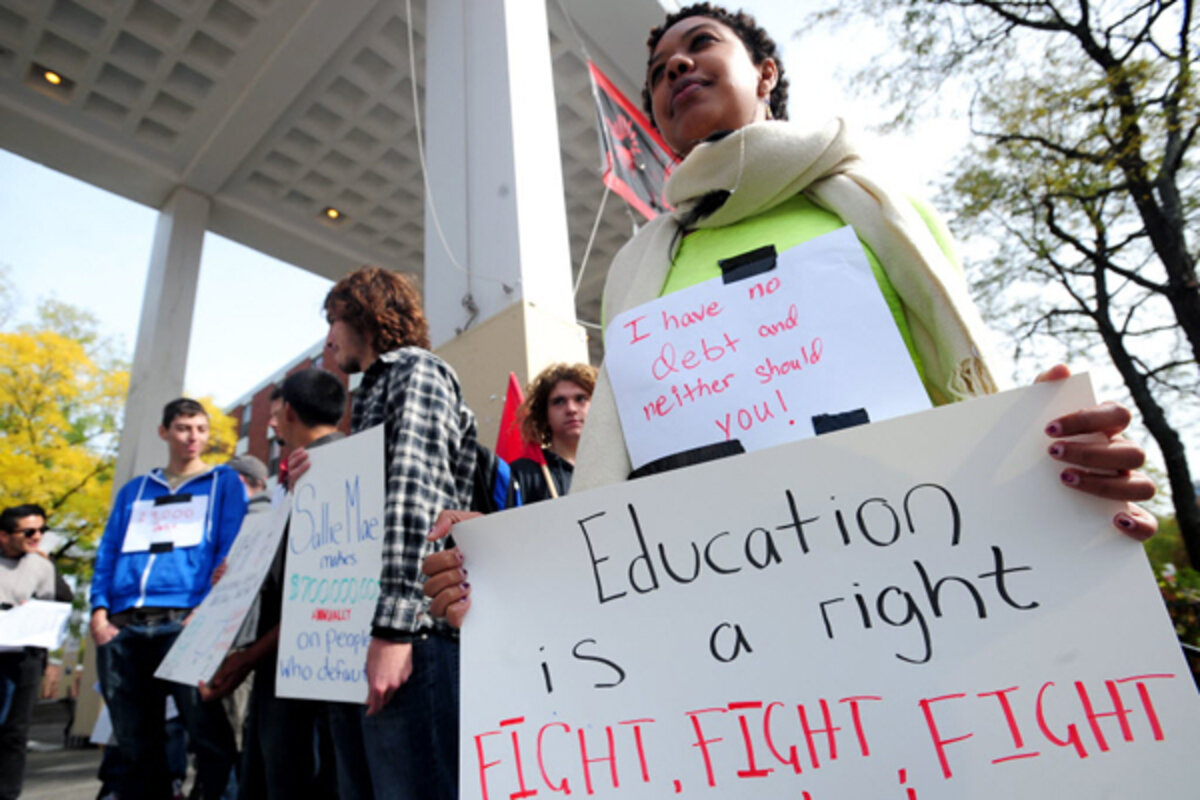Student loan interest doubles in July due to Congressional inaction
Loading...
| WASHINGTON
Congressional inaction could end up costing college students an extra $5,000 on their new loans.
The rate for subsidized Stafford loans is set to increase from 3.4 percent to 6.8 percent on July 1, just as millions of new college students start signing up for fall courses. The difference between the two rates adds up to $6 billion.
Just a year ago, lawmakers faced a similar deadline and dodged the rate increase amid the heated presidential campaign between President Barack Obama and Republican challenger Mitt Romney. But that was with the White House up for grabs and before Washington was consumed by budget standoffs that now seem routine.
"What is definitely clear, this time around, there doesn't seem to be as much outcry," said Justin Draeger, president of the National Association of Student Financial Aid Administrators. "We're advising our members to tell students that the interest rates are going to double on new student loans, to 6.8 percent."
The new rates apply only to those who take new subsidized loans. Students with outstanding subsidized loansare not expected to see their loan rates increase unless they take out a new subsidized Stafford loan.Students' nonsubsidized loans are not expected to change, nor are loans from commercial lenders.
But it translates to real money for incoming college freshmen who could end up paying back $5,000 more for the same maxed-out student loans their older siblings have.
House Education Committee Chairman John Kline, R-Minn., and the committee's senior Democrat, George Miller of California, prefer to keep rates at their current levels but have not outlined how they might accomplish that goal. Rep. Karen Bass, D-Calif., last week introduced a proposal that would permanently cap the interest rate at 3.4 percent.
Adding another perspective to the debate, Obama will release his budget proposal on April 10.
Neither party's budget proposal in Congress has money specifically set aside to keep student loans at their current rate. The House Republicans' budget would double the interest rates on newly issued subsidized loansto help balance the federal budget in a decade. Senate Democrats say they want to keep the interest rates at their current levels, but the budget they passed last week does not set aside money to keep the rates low.
In any event, neither side is likely to get what it wants. And that could lead to confusion for students as they receive their college admission letters and financial aid packages.
"Two ideas ... have been introduced so far — neither of which is likely to go very far," said Terry Hartle, the top lobbyist for colleges at the American Council on Education.
House Republicans, led by Budget Committee Chairman Paul Ryan, R-Wis., have outlined a spending plan that would shift the interest rates back to their pre-2008 levels. Congress in 2007 lowered the rate to 6 percent for new loans started during the 2008 academic year, then down to 5.6 percent in 2009, to 4.5 percent in 2010 and then to the current 3.4 percent a year later.
Senate Democrats, led by Sen. Patty Murray, D-Wash., say their budget proposal would permanently keep thestudent rates low. But their budget document doesn't explicitly cover the $6 billion annual cost. Instead, its committee report included a window for the Senate Health, Education and Pension Committee to pass astudent loan-rate fix down the road.
But so far, the money isn't there. And if the committee wants to keep the rates where they are, they will have to find a way to pay for them, either through cuts to programs in the budget or by adding new taxes.
"Spending is measured in numbers, not words," said Jason Delisle, a former Republican staffer on the Senate Budget Committee and now director of the New America Foundation's Federal Budget Project. "The Murray budget does not include funding for any changes to student loans."
Some two-thirds of students are graduating with loans exceeding $25,000; 1 in 10 borrowers owes more than $54,000 in loans. And student-loan debt now tops $1 trillion. For those students, the rates make significant differences in how much they have to pay back each month.
The Congressional Budget Office estimates that of the almost $113 billion in new student loans the government made this year, more than $38 billion will be lost to defaults, even after Washington collects what it can through wage garnishments.
The net cost to taxpayers after most students pay back their loans with interest is $5.7 billion. If the rate increases, Washington will be collecting more interest from new students' loans.
For some, though, the interest rates seem arbitrary and have little to do with interest rates available for other purchases such as homes or cars.
"Burdening students with 6.8 percent loans when interest rates in the economy are at historic lows makes no sense," said Lauren Asher, president of the Institute for College Access and Success.




